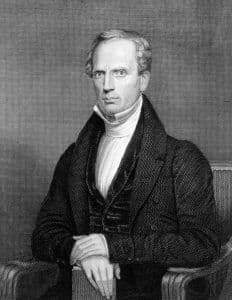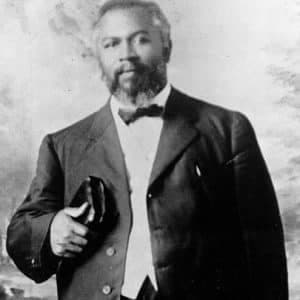
With Asbury College, Kentucky making headline news across the world, we look back at significant revival movements from history. In this blog we'll ask, "Is what's going on at Asbury College a revival for our times?"

In simple terms, revival is a spiritual renewal. The word is used variously to describe a spiritual event; a large gathering of Christians; a healing meeting; a move of God. This can be confusing. But when we take it back to a Biblical context like Acts 2 (which we'll get into later in the blog), we discover that a Biblical Revival is more than a blessing to the people of God. It's more than a one-off event or a special service. Revival is a sovereign move of God that leads to a regeneration of church and society. Throughout history, there are many stories of people gathering together in public worship as normal, who describe a dynamic shift in their meetings. Eye-witness accounts explain a sense of holy awe and an awareness of God's presence. There is a sense of being overtaken by the Holy Spirit and of an unusual desire to worship and pray. Whilst some argue that these kinds of meetings don't necessarily lead to a revival, they certainly create the opportunity for one to take place.
In a Biblical Revival, what begins as a personal spiritual encounter becomes a powerful community movement. We see a picture of this in the early church in the book of Acts. The Holy Spirit fell on a small group of believers in Acts 2 and they began to speak in different languages. As they spoke, people from outside the region began to recognise their own dialect and were amazed. The disciples, empowered by this new outpouring of the Holy Spirit, preached a message of repentance and baptism. 3000 people were converted to Christianity, the church grew in number and began to impact every sphere of society. The early church was birthed in a revival.

Some of the most common features of revival throughout history are: A significant 'lightening strike' moment when the movement began. An increase in spiritual vitality in the Christian community. An influx of new followers of Jesus. More passionate and devoted sung worship. Revival often births new songs and a new soundtrack. A confession and repentance of sins. Frequent physical healings with the work of the Holy Spirit being strongly present in public meetings.
Biblical Revival always brings a spiritual and social uplift to people and communities . A great example of this is in the ministry of Charles Finney, a preacher and leader in the Second Great Awakening. He preached the need for a personal relationship with Christ and promoted social reforms such abolitionism and equal education for women and African Americans. He taught at Oberlin College from 1835, accepting students regardless of race or sex. Students from Oberlin were active in the Underground Railroad and for universal education. For Finney and others, revival was more than a spiritual renewal. It was the catalyst for social reformation.
The church's role in revival is critical. Churches have always been a significant source of spiritual instruction and direction for their communities. As a consequence of the Second Great Awakening, denominations such as the Methodists and Baptists grew quickly. The involvement of these organised churches allowed the revival to spread across multiple locations and to have a greater impact.
Revival movements have a long and complicated history. Here, we've outlined some of the most impactful moves of God.

George Whitfield (16 December 1714 – 30 September 1770) The First Great Awakening, which occurred in the early 1700s, was the most noteworthy time of religious renewal in the United States. It was a period of greater religious excitement and commitment to Christianity, mostly spearheaded by Jonathan Edwards and George Whitfield, who simplified the gospel message and reformed religious traditions throughout the colonies of the US. Edwards, in particular, preached about the significance of having a personal encounter with God. Whitfield journeyed across the colonies preaching about the importance of repentance and faith in God. An estimated 80% of America’s 900,000 colonists personally heard Whitfield preach. Church memberships in New England increased dramatically during this time. Many historians claim that the Great Awakening influenced the Revolutionary War by encouraging the notions of nationalism and individual rights. One source explains that the motto of the Revolutionary War was, "No King but King Jesus!" This revival also led to the establishment of several renowned educational institutions, including Princeton, Rutgers, Brown and Dartmouth universities.

Charles Finney (August 29, 1792 – August 16, 1875) The Second Great Awakening, during the early nineteenth century, was marked by a revived passion for Christianity and its doctrines. Several major personalities led the Second Great Awakening, including Charles Finney, Lyman Beecher and Asahel Nettleton. Theology in many denominations shifted from Calvinism to a practical Arminianism as preachers emphasized the ability of people to make their own decision for their salvation. Their efforts had a profound impact on the nation's spiritual life as well as the structure of numerous churches. As one commentator explains: "The large numbers of Christian workers for social reform became so influential they and the organizations they founded became known as the Benevolent Empire."

Evan Roberts (8 June 1878 – 29 January 1951) The Welsh Revival is often regarded as the beginning of the modern period of evangelicalism in the United Kingdom, and its effects can still be felt today. The revival was led by Evan Roberts and Joseph Jenkins. Roberts was a coal miner and evangelist who drew hundreds to repentance and conversion through strong preaching, while Joseph Jenkins was a pastor who spoke at several revival meetings and helped to organize and coordinate events.
The social impact of revival was documented by historian J.Edwin Orr, who noted: “Drunkenness was immediately cut in half, and many taverns went bankrupt. Crime was so diminished that judges were presented with white gloves signifying that there were no cases of murder, assault, rape or robbery or the like to consider." With as many as 100,000 people professing faith in Jesus at this time, the Welsh Revival's impact spread globally. It was felt as far away as California, and in particular, Azusa Street. The Azusa Street Revival (1906-1915)

William Seymour (May 2, 1870 - September 28, 1922) The emphasis of this revival was on racial harmony and the power of the Holy Spirit. It was led by William J. Seymour, a son of former slaves who helped spread the revival's message across the United States and beyond. The Azusa Street Revival sparked a fresh interest in traditional spirituals, as well as a rebirth of the early Church's 'charismatic' talents, such as speaking in tongues and prophecy. Speakers of German, Yiddish and Spanish all reported messages being spoken in their native language by uneducated church members, who translated the languages into English by "supernatural ability".[14] Above all, the Azusa Street Revival will be remembered for its display of the Holy Spirit's power. Its legacy lives on today, with countless churches and missions all around the world bearing its imprint.

John Wimber (February 25, 1934 – November 17, 1997) Since the 1960s, the Charismatic Movement has been a significant component of Christianity. It is well known for concentration on the Holy Spirit's gifts, such as speaking in tongues, miraculous healing and prophecy. One of the most significant leaders in this movement was John Wimber, who argued for importance of the social impact of revival as well as the gifts of the Spirit: "Priority may be given to spiritual needs, but the meeting of material needs inevitably follows true revival.” The Vineyard Movement, led by Wimber, is credited with establishing and popularizing the Charismatic Movement in the United States and planting hundreds of churches worldwide. The Charismatic Movement saw the expansion of Pentecostal denominations, a greater emphasis on teaching and awareness of spiritual gifts, and the rise of megachurches and multi-site congregations.

At time of writing well over 50,000 people have visited Asbury College. Recent news reports carry stories of lengthy queues and parking nightmares as visitors from places like Finland and The Netherlands come to visit the chapel. And whilst it's true that the Asbury outpouring is growing in notoriety, not enough time has passed to see this outpouring take shape into a full scale revival. It is simply too early to use that term accurately in the way that the First Great Awakening or the Welsh Revival has such transformative impact on society as a whole. Yet, story after story coming out of Ashbury commends the humility of the leadership, the tangible sense of the presence of God, the spontaneous worship and the spirit of prayer and confession. All compatible with the early signs of an historic spiritual revival. Tom McCall, an Asbury professor writing for Christianity Today speaks about the gathering like this: "The mix of hope and joy and peace is indescribably strong and indeed almost palpable" As the world watches on, Christians across the globe continue to hope and pray that this is a hype-free and truly authentic move of God.
Download Glorify Today